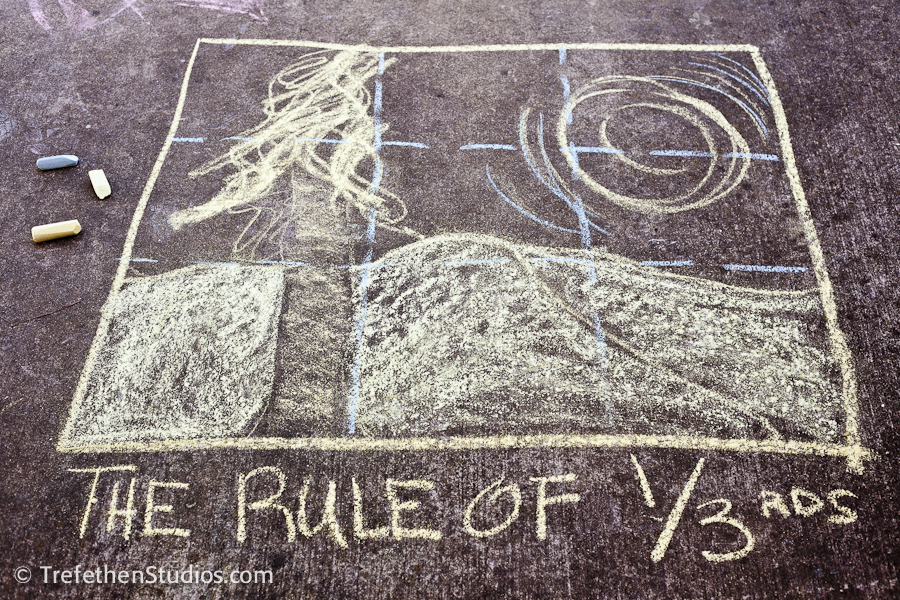
As a beginning/amateur photographer, you might find yourself framing your subjects in the dead center, with little attention paid to surrounding elements. Did you know the center of the frame is one of the most highly charged areas? This may be the reason why we see the aforementioned placement. One goal in composing your photographs should be directing your viewers throughout your frame, not just into the center. To accomplish this task it’s best to place your key subject(s) away from the dead center of the frame. This simple procedure will aid in preventing static compositions.
 The rule of thirds is a handy guide to not only encourage you to move subjects out of the center but also to do so in a way that has a strong sense of design.
The rule of thirds is a handy guide to not only encourage you to move subjects out of the center but also to do so in a way that has a strong sense of design.
How does it work?
Imagine the frame inside your viewfinder being divided into three vertical segments and three horizontal segments. Placing the main subject or main points of interest on one of these imaginary lines or their intersection will add more visual interest. In the case of landscapes, the horizon line should be placed on one of the imaginary horizontal lines.
As the saying goes, rules are made to be broken. While that point may be arguable, the rule of thirds serves as a guideline. Just be sure and question your motives if you frame a shot with the main subject placed dead center.
Don’t be afraid to move subjects off to the side and experiment with different arrangements. Sometimes, this works due to the formality of the image, a concept well-served by centering. The trick to this and all other guidelines is to identify the key components of your scene and use the strategy that best enhances your chosen subject.
amzn_assoc_placement = "adunit0";
amzn_assoc_enable_interest_ads = "true";
amzn_assoc_tracking_id = "gentlfarmi-20";
amzn_assoc_ad_mode = "auto";
amzn_assoc_ad_type = "smart";
amzn_assoc_marketplace = "amazon";
amzn_assoc_region = "US";
amzn_assoc_linkid = "2f48f9c1b3c3b0a78a1587b2ed59f052";
amzn_assoc_emphasize_categories = "2617941011,13900861,1055398,284507,2972638011,3375251,228013";
amzn_assoc_fallback_mode = {"type":"search","value":"Scythe, Permaculture, Market Garden, Farmers Market"};
amzn_assoc_default_category = "LawnAndGarden";
</script>
<script src="//z-na.amazon-adsystem.com/widgets/onejs?MarketPlace=US"></script>
Fall Inspiration and Shifting Farmstead Routine
My list has grown shorter. I turn to activities indoors. A fitness maintained by the work of this land now shifts to a rhythmic running program that stimulates the mind and enriches creative thought and the exploration of new ideas.
Shocking Reality About Training Wheels
If you have children and are even considering teaching them how to ride a bike, I urge you to consider a balance bike first and foremost. These bikes will save your children the trouble of unlearning all the bad habits they develop with training-wheel equipped bicycles.
Food Forests: Learning About Natural Forest Guilds
From the Olympic National Forest we find ourselves learning about creation and the naturally occurring forest guilds along with their natural progression towards sustainable self reliance.
My Creative Exploration and Generation of Ideas
In conditions of new ideas and working assignments, creatives experience both renewable pastures, flowing with honey and milk and or huge desert scenery, dry as far out as can be seen. This article describes how to work with both.
